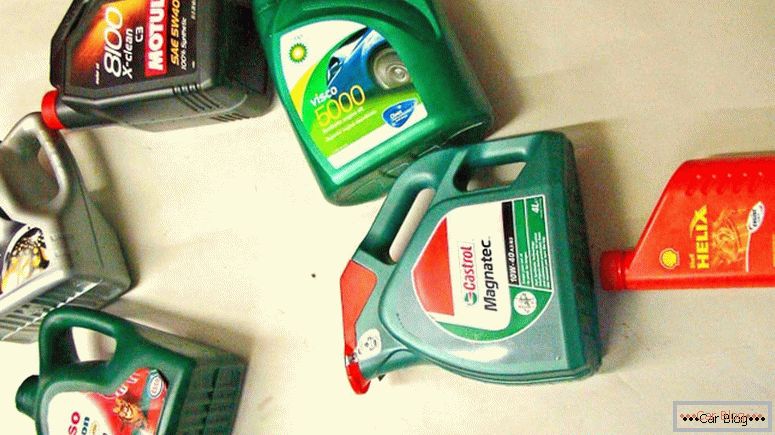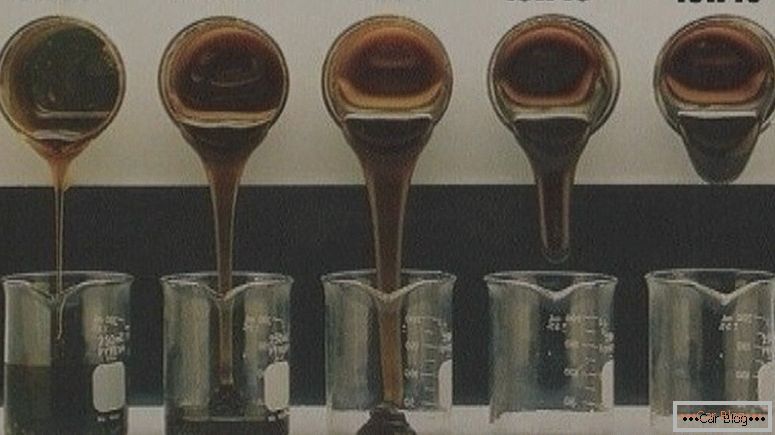Opinions of drivers differ in the question: is it possible to mix motor oils with different characteristics, will it affect the engine. Someone categorically denies such an initiative, believing that nothing good will come of it. After all, the stage of motor washing will be excluded. Someone, on the contrary, assures that there is nothing bad in such “mixes”. Both of these parties provide their arguments. It is possible to mix oils, but it is necessary to do this, following certain rules. Otherwise, you can cause serious damage to the motor, which will require costly repairs.
Content
- 1 Theoretical aspects of blending oils
- 2 Oils of different types and their combination
- 3 Synthetic oils and their blending
- 4 The result of mixing "semi-synthetics" and "synthetics"
- 5 Engine oils for one brand
- 6 Oils of different manufacturers
- 7 What we get when mixing 5W30 and 5W40
Theoretical aspects of blending oils

Mixing oils is permissible, but it should be done very carefully.
As mentioned above, blending motor oils is possible, but there are certain factors that require special attention. To begin, let's see what oils are:
- "Synthetics", in its composition are completely artificial chemicals.
- "Mineral". Made from natural ingredients, the main of which is oil. It can also be called organic.
- "Semisynthetics". This oil combines the first and second views, representing their symbiosis.
Although mixing is allowed, it is necessary to do this, according to experts in extremely rare cases, in which it is really not possible to comply with the recommendations of the manufacturer.
Oils of different types and their combination
If you used mineral motor lubricant for your engine, then it can be combined with semi-synthetic lubricant. It is also possible to mix with oils that are obtained as a result of the hydrocracking process. Another option that is suitable for adding to “mineral water” may be “synthetics”, the basis of which is poly-alpha-olefins (PAO).
Such types of synthetic oils, such as polyester, silicone and glycol, can be poured into the mineral, but there are certain nuances. Here it is necessary to take into account the chemical composition of a specific synthetic product. This information is better to specify directly from the automaker. There are cases when the oil level has fallen sharply, but the right one, unfortunately, is not at hand, then you have to add a little mineral water to synthetic or semi-synthetic oil.

When mixing oils of different high-temperature viscosity, the final viscosity of the oil may vary slightly
Synthetic oils and their blending
Many brands today develop their oils in accordance with the standards of API (US) and ACEA (Europe). This oil can be mixed with any other oil from another manufacturer, also certified by API or ACEA. At the same time, the possibility of obtaining a negative result, in which negative reactions may occur (a precipitate fell, foaming occurred) is minimized.
See also: Installing flame arrester instead of catalystThis suggests that if you used synthetic motor oil for your engine, which is certified according to API or ACEA standards, then, in case of emergency, you can safely pour the liquid from another company. But at the same time it must also comply with these standards. There will be no harm from this. But at the first service station it is better to replace this mixture with oil, which is recommended by the manufacturer of your car, beforehand, having made the system flush.
The result of mixing "semi-synthetics" and "synthetics"
Another option is the mixing of liquids 5W40 and 10W40, where the first refers to the synthetic form, the second to the semi-synthetic. If the car is filled with "synthetics" and you find yourself in the field and the level of lubricant has fallen, but you only have a canister with "semi-synthetics", then there is a way out. You can safely mix the two oils 5W40 and 10W40. The viscosity of the mixture obtained will vary from 6W40 to 8W40, which depends on the ratio. The most successful option is to add higher quality oils to the existing lubricant, that is, semi-synthetic 10W40 can be diluted with synthetic 5W40.

In critical situations, mixing synthetics and semisynthetics is allowed.
Engine oils for one brand
Often, different products of the same brand have a lot in common. Experts say that “painlessly” it is possible to add oil of slightly different viscosity to the engine, the main thing is that the manufacturer be the same as that of the one actually poured into the engine. Even in spite of the classifications considered earlier, such assertions have a completely logical justification. All because the oils of the same manufacturer have a large number of common elements, that is, the differences in their chemical composition are minimal.
Simply put, oils are manufactured on a general basis and contain a similar set of additives. Therefore, the liquid of one manufacturer is allowed to mix in any proportions. It will be useful to know that the same oil can be sold under different brands. Generally, if you plan to switch from one viscosity level to another, the best option would be to switch within the line of one brand of oils. Have you ever thought about, even with a complete replacement of the oil in the engine, 5 to 10% of the old fluid remains? Of course, this is a small amount, but still the likelihood of additive conflict remains. Therefore, it is easier to use oils from one manufacturer, especially, as already mentioned, when switching to another level of viscosity. That is, having in the engine semi-synthetic oil of the company “N”, synthetic oil should also be purchased of the brand “N”.
See also: Which sensor is responsible for engine speedOils of different manufacturers
This is the most risky option and no one can guarantee a successful result for 100%. This is explained by the fact that each manufacturer uses its own technologies and compositions with different additives. This does not mean that a negative chemical reaction may occur and the oil will foam or precipitate. But there is no guarantee that the components of liquids of different brands will not reduce the beneficial properties of each other when mixed. Such cases also occur, although rarely.

Oils from different manufacturers have different sets of additives, mixing can cause them to conflict.
What we get when mixing 5W30 and 5W40
The result of this reaction is a slight decrease in the coefficient of high-temperature viscosity. For example, the level of engine oil in an engine has dramatically decreased. In the automotive products shop you were informed that at the moment the “synthetics” 5W40 is not available, but there is a similar working fluid with the same marking, but a different brand. In this case, you can take oil 5w30 of the same manufacturer. The result of mixing in this case will not have a negative impact on your engine. If you add significant volume, all that can happen is an uncritical reduction in viscosity.
Когда используется всесезонная рабочая жидкость 5W30 или 5W40, мотор можно без проблем запустить при его температуре 35 градусов. Результатом смешения в таком случае станет незначительное снижение коэффициента температурной вязкости (цифры после”W” в маркировке). Это также не является критичным и значимо только при эксплуатации двигателя при экстремально высоких температурах. Надеемся, что, вышеуказанная информация поможет вам разобраться, what engine oils can be mixed.



